Search the Community
Showing results for tags 'airbrush'.
-
Summary: A good airbrush for its job but with some peculiarities that can be a deal breaker. Yesterday I had my first painting session with my new Badger Sotar 20/20 V, which I bought directly from Badger with the 2020 Birthday discount. The V has a 0.3 nozzle / needle and a larger cup (sort of - I will explain later). For reference, I have been an owner of an Olympos side-feed airbrush (0.3) for something like 20 years, and a Harder and Steenbeck Evolution (0.2 / 0.4) for one and a half year. The Olympos is a great airbrush but the side feed always bothered me, and the H&S is also great but I cannot get comfortable with the position of the trigger. Both the Olympos and the H&S are manufactured like precision surgical instruments. Upon taking the Sotar out of the pouch it came with, two things impressed me: First, how it fit in my hand. Like the shoe that you will not throw away even though it is falling apart because it is soooo comfortable. I got an immediate similar feeling from the Sotar. Second, that any movement of the needle felt rougher than what I was used to. I took the needle out to find that it was well lubricated, so I attribute the roughness to the back-and-forth friction against some sealing o-ring. Which I do not consider a bad thing, given that my H&S will, when backflushed, send paint back to the trigger section. During painting, the Sotar gave me good atomization, even though I noticed that I needed about 5 PSI more in all scenarios, which I attribute (probably because I am physics-illiterate) to the smaller aperture of the air inlet (which also delayed my enjoyment of the airbrush as I had to find the appropriate adapter!) I am not a big detail painter but in my fooling around with the Sotar, it seems that details wouldn't be a problem. Also, I have to point out that Badger does not provide any protection for the needle while in use and only a badly-cut rubber tube thingy like a cap for when not in use. I understand that this is a discount item but it makes the whole thing feel a little cheap. What is weird in this airbrush is the cup. The Sotar V, being a more general purpose airbrush, has a bigger cup than the other Sotars. However, the cup has a cutaway on its back side from the top to half the height of the cup which makes a significant portion of the cup useless. Deal breaker: The airbrush is great so far but I will not buy another Sotar. The deal breaker is the miiiiniscule nozzle. Smaller than my H&S (of course, since H&S have comparatively huge nozzles - which was its selling point for me, compared to my Olympos) but also smaller than my Olympos which I understand is Iwata-sized and for me was already marginally too small but thankfully has two flat surfaces on its two sides that made it much more handlable. Sotar nozzle is so small that I can barely hold between my fingers - and I have normal fingers. But I also have a standing relation with the floor monster (no carpet) so I am sure that one of these days this small small nozzle will disappear never to be found again. So a good airbrush for its job but with some peculiarities which can be a deal breaker.
-
www.air-craft.net is the website of Air Tech Equipment Ltd - We are an UK based online retailer specialising in airbrushing equipment, spares & accessories along with a selection of modelling related paint, tools, masking, abrasives, accessories & what not. Our website shows live stock levels & we do not support back ordering, so with the exception of the very occasional stock level errors, if it's indicated as in stock, it is physically in stock. We ship around the globe, using Royal Mail & Parcelforce in the UK, Royal Mail Airmail & Parcelforce / GLS in Europe & Royal Mail Airmail, TNT & UPS for orders beyond Europe, orders generally ship the same or next working day. We can accept PayPal, credit card or bank transfer as payment methods & for added security our website is HTTPS throughout. We are direct importers or official resellers for all the products we sell, are familiar with the technical aspects of all equipment listed & have a significant range of spares to support said equipment. We are happy to advise on any airbrush equipment related enquiries, but I'm afraid we don't have a team of receptionist & sometimes struggle to get to the phone during busier periods - If you don't get a reply & prefer not to leave a message you can email us on [email protected] & we will respond as soon as we can. Harder & Steenbeck - airbrushes, spares & accessories Iwata - airbrushes, compressors, spares & accessories Sparmax - compressors, airbrushes, spares & accessories Mr Hobby - airbrushes, spares, paints & accessories Neo for Iwata - airbrushes, spares & accessories Werther Sil-Air - silenced compressors & spares Benchvent - spray booths Tamiya - paints, tools, masking & accessories Swann Morton - knives & blades Olfa - knives, cutters & blades Micro-Mesh - abrasives Flex-I-File - abrasives & adhesives Model Craft - tools Ultimate Modelling Products - cleaner, thinner & primers Others - Xuron, 3M, Light Craft, Artool, Aircom, Adhesives, Brushes.......... Thanks for looking, Martin Ferguson, Air Tech Equipment Ltd.
- 11 replies
-
- airbrush
- compressor
-
(and 1 more)
Tagged with:
-
I've been on a hunt for primers and varnishes to use with my Vallejo paints. I don't normally prime or clean my models before I paint them, and just started to use varnishes on a few of my models. However, I just switched from using Testor's enamels in my airbrush to Vallejo's model air. I don't want my paints to react with anything I do end up getting. As far as primers go, I can't seem to find something that is just an overall good primer. It seems that Vallejo brand primers get a really bad rap and don't "adhere to the plastic, just create a film on top of it". Throughout the research I've done, Stynylrez primers seem to be a favorite. I'm also considering Mr. Surfacer 1200. Is it worth mixing brands or do Vallejo primers work well enough? And is there a certain color I should get? And for Varnishes, my paint set came with a couple of varnishes- Gloss, satin, Matte. I did use the gloss but it seems to have not done mush with the surface of the airplane after about 3-5 coats. With this, I'm not sure if I was doing something or it was the varnish its self. I'd like to get some GX100 since it seems to be a great clear coat from what I read. Any ideas of what I should do or past experiences you can share? - Joanna
- 3 replies
-
- Vallejo Air
- airbrush
-
(and 1 more)
Tagged with:
-
Hi fellow modellers. I have a problem with my Hataka red line paints. They stay sticky after airbrushing. I have used different thinners with them (hataka, vallejo, green stuff world) but the result is the same. Do any of you experience the same problem? Any solutions? I have tried to airbrush the Hataka blue line (for brush painting) and they seem to work better. They spray easy and dries fast without the sticky feeling. Looking forward to hear your experiences with these paints. Happy modeling. /T
-
Hi, I've been airbrushing for around seven months now, had one of those £40 amazon sets and then i changed the airbrush to a harder steenbeck ultra but kept the cheap compressor hoping that the air pressure is sufficient. Paint used to spray fine but over the last couple of times it has started to become very grainy or just not spraying any paint at all. I clean all the airbrush parts to the best of my ability. I have come to multiple conclusions: compressor not good enough, paint not thin enough, wrong thinner for the wrong brand or even something as simple as tip drying. I use vallejo 71.361 thinner on tamiya paints, sometimes I thin it so much it looks like water so I add some more paint and it goes all grainy and 30 seconds later it stops spraying. Please can you shed some light on the troublesome area. All the best, Magnus.
-
I own a few airbrushes, three or four chinese ones, (used for primer coverage and clearcoats) I use harder stenbecks Ultra with .2 kit and Infinity CRPlus with .4 kit. Then a Paasche Hsr for primer detailing. The ultra is a good airbrush, but suffers one misfortune, the needle tip and cap design. The CR plus and infinity range come with a different cap and push on tip cover, but nearly all use the same needle tip. This is a pinch tip design, which i think is totally imperative when spraying acrylics. Dry tips easily fixed! But the Ultra range come with a solid cap/cover design which is very difficult to backflow and nearly impossible to quickly clean tip dry problems. So here is the fix. Whichever needle size you have (.2 or .4) all you need is the CRPlus or infinity cap and push on pimch type cover. They fit perfectly, and presto! A much more user friendly pinch tip on the Ultra. Surprising that Harder Steenbeck dont list it as an option!!
- 15 replies
-
- Harder steenbeck
- airbrush
-
(and 1 more)
Tagged with:
-
Maybe I need to brush up my searching skills, as I can't believe I'm the first person to ask this: Are airbrush needles brand specific? Obviously they need to match the nozzle size, but does the manufacturer matter? I managed to bend the needle tip on my airbrush. It's labelled Sparmax SX0.3D on the box, but Tamiya 74801 on the airbrush body. I can't seem to find sparmax needles anywhere online, (and their website wasn't much help). The options seem to be (i) taking a punt on a 0.3 needle specc'd for a different airbrush. or, (ii) ordering a cheap set of needles from some "no-name" manufacturer and hoping for the best. And tomorrow I'll try to straighten the needle. But none of these approaches fill me with confidence right now. Obviously, it'd be expensive to have to replace the whole 'brush for the sake of one component, so I wondered if anyone else has had a similar experience?
-
Hi guys, been building for a while, built a few but now looking to move on to an airbrush and compressor kit, just looking for advice and any recommendations really? I don't want to spend a fortune as I don't build all the time etc, but at same time I do not want a cheapo which would break or provide terrible results as this would be a false economy. I came across a new Voilamart Airbrush 1/6hp compressor Kit with 3 airbrushes on ebay for £65 delivered, sounds like a good deal, but any advice would be greatly appreciated guys.
-
Hello, I was wondering if someone already tested Mig's new Aircobra airbrush and can deliver first-hand, non-sponsored insights on it. Especially, the usage with acrylics is something where other manufacturers struggle. To my understanding the brush itself is manufactured by Badger but is not a simple re-branded copy of one of their products. Which Bdager airbrush would come closest to the Aircobra components- and handling-wise? Thanks! Cristian
-
I've entitled this piece "almost the last word in choosing an airbrush." The reason for this is that someone, or quite a few who read this are going to have a lot to say about this article. Choosing an airbrush is a personal thing. What works for one person may not work for another. However, there are some basic rules that should be considered when you buy an airbrush together with some basic science. I'm a modeller! I use my airbrushes on a daily basis. I've tried most of the airbrushes out there and I would like to believe that I have a good understanding about the pitfalls and the pain when buying an airbrush. I have been there and done that. I spend a lot of time talking to modellers from various backgrounds and at different skill levels. As an authorised Grex dealer. I make no bones about the fact that the Grex TG is my preferred airbrush. When I came back to the modelling hobby I started with the typical cheap airbrushes in the "blue foam" box. I also bought a very cheap compressor which I returned within a week and exchanged it for a similar model which had a tank. After a lot of frustration, I very quickly moved on to buying an H & S Evolution and a high end Iwata dual piston compressor. Admittedly the compressor was a little bit of an overkill. After this came the Aztek A777 metal airbrush. If it was favoured by someone like Brett Green I couldn't go wrong. It was at this point that my airbrushing started to come close to what I was trying to achieve and what I saw others achieving in their models. There was nothing spectacular about the Aztek. What had changed was the fact that I'd gone from .2 mm needle to .3 mm needle unknowingly. Beginners struggle with the concepts of paint thickness as described in a lot of modelling articles. People talked about "thinning your paint until it has the same viscosity as skimmed milk". When you are at the workbench and pretty new to airbrushing the statement means nothing to most people. Getting good results with an airbrush requires three settings: paint, viscosity (paint thickness), needle size and PSI (compressor air pressure). The type of paint you use will also have a dramatic effect on the results that you achieve. Using a .3 mm needle does not mean that you cannot produce fine lines. One of the features I like about the Grex is that you can regulate the trigger travel and air flow to the point where you constantly get the finest of lines. A modelling friend says he can write a signature with these Grex. The reason that he can do this is that Grex has engineered their needle to work with model paints. It has a slightly design to it. I will come back to this. Illustrators and beauticians use inks or high gloss nail polish. Not model acrylics or enamels. Paint has a completely different viscosity and is thicker than ink. That is why people still struggle with high-end airbrushes from other manufacturers. Don't get me wrong, if I someone asked me what's the best airbrush to buy for illustration I would absolutely recommend that they consider the high-end Harder & Steenbeck CR plus or something similar from Iwata or any one of the leading brands. Having owned a H & S CR Plus one and it's an amazing airbrush. There is a BUT. When it came to modelling I didn't get the results that I wanted. The .2mm needle was too small and the .4mm needle to big. I found myself limited to the types of paint that I could use. These were mainly Mr Hobby and Tamiya. These paints worked well because by this stage I'd learned to thin the paint down to about 65/35 ratio mix of thinner (reducer) to paint. The moment I tried something like Lifecolor which has a very grainy and chalky consistency I found that my very expensive H & S began to splutter. It was not the airbrushes’ fault but it was the needle size. At this stage are still owned by Aztek and I found that I had no problems Lifecolor or Valljeo through it. I also found that I struggled to pre-shade. When doing something like a Spitfire with a lot of panel lines I found that my hand would cramp after a period of time. More importantly, most of my pre-shading disappeared once I started with my topcoats. The reason for this was that unless you use Mr hobby in an almost translucent (very thin) state and let it dry between coats, you will very quickly lose your pre-shading lines. Having read a lot about the Grex pistol grip and watched a number of Youtube videos I hoped that it would at least solve the problem of hand cramping. I wanted a high-end airbrush as I felt that I'd outgrown the Aztek and I was disappointed that I was not getting the results that I wanted with the H&S. The moment that I started using the Grex TG .3mm I felt that I was now using an airbrush designed for modellers. People complain that they tried an airbrush at a modelling show and that it performs completely differently when they get home. Why? The first question is “did you actually try the airbrush with the paint that you intend using at home? The answer is usually “No I sprayed whatever was available at the show”. Model paint is expensive and generally people demonstrating airbrushes at shows use food colouring or a very thinned ink. This is not to try and trick you it is simply economics. Beauticians who use airbrushes to perform nail art will also prefer the .2mm needle because they are using gloss pigments (nail polish) which again flow more easily through the airbrush than do the flat military colours that we as hobbyists generally use. It’s important for model builders to understand that most high quality airbrushes are engineered with inks and gloss pigments in mind and not the flat paint qualities that model builders use on a regular basis. Let’s pause a moment Flat or Matt colors use in military modelling lacks shine (gloss) high gloss paint finishes reflect light and that is not something that is desirable when try to hide from an enemy. In fact for most military modellers they use a clear flat coat as the last sealing coat to get an even flatter finish. So what makes an acrylic paint Flat? The coarse molecule of the paint is what gives it a flat look and consequently increases the viscosity and this presents further inherent challenges of the paint flowing through the airbrush as compared to gloss paints and inks. While it’s possible to utilize the .2mm needle and nozzle combination for model building it does have limitations that could become challenging to the novice airbrush user. To begin with, most hobby paints, whether they are enamels or acrylics, require some amount of thinning to work in an airbrush. The range of proper thinning is very narrow when using a .2mm needle. If the paint is under thinned, then the paint will tend to spatter rather than provide a smooth flow of paint when attempting fine line work. If the paint is thinned too much then the paint ceases to perform as it should. It could become translucent when it should be opaque. The paint may not bond with the surface of the model properly either and easily buff or chafe off. Masking over it may also cause the paint to lift off the model as well. If you prefer to use acrylic paints specifically more problems could occur. For example, tip dry is a constant problem for most water-based acrylics. The smaller needle size will likely exacerbate the problem more. Also in regard to acrylics, even if the paint is thinned correctly, there is the possibility of an unusually large particulate of pigment in the matrix if the paint that can cause clogging issues as well. Going from a .2mm needle to a .3mm needle may sound like semantics but trust me, it does make a difference and will reduce or eliminate these problems. So you may ask, how does the .3mm needle still provide a fine line quality yet be a bigger needle size? As I mentioned above, the Grex answer to that is in the taper of the needle itself. Many of Grex’s competitors have what I call a compound taper to their needles. That is to say the needle tapers for a bit then it has a more extreme taper to the point of the needle. This can be seen if the needle is held against a white background showing the profile of the needle. While this type of engineering creates strength in the needle it compromises performance when it comes to detail work. If you look at a Grex needle it has one extreme taper that is consistent from tip to the full diameter of the needle width. Grex Airbrush needles are made of stainless steel to maintain integrity. However even with a strong metal such as stainless steel we recognize the needle can still be damaged. With that said Grex do no not charge an arm and a leg for a replacement needle to the consumer. Dealers offer replacement needles for around £10.00 or $12.00 give or take a few pence/cents. As such with the .3mm needle in conjunction with our fluid nozzle engineering a fine line capability is easily obtained with less precise thinning of the paint. Practice and knowing the qualities of your preferred brand of paint are still necessary however the likelihood of success is much greater. With regard to water-based paints, tip dry is still an inherent issue but at a reduced level. With all that has been said, I can say with confidence to the novice airbrush user the .3mm needle is a much preferred needle size to that of the .2mm needle. My suggestion to the consumer is to start off with an airbrush with the .3mm needle in it. If at some point with experience they wish to change the needle size they may do so. Grex Airbrush does provide TK-2, TK-3 & TK-5 nozzle kits, which are comprised of three components, the needle, fluid nozzle and nozzle cap, which are matched for the best performance possible. The TK kits are compatible with Grex Tritium TG and TS airbrushes as well as our new Genesis XGi and XSi airbrushes. The suffix number denotes the needle size in the kit, .2mm, .3mm or .5mm. Should the airbrush user wish to go down in needle size or go to a larger needle size for larger projects they have the capacity to do so. These kits retail for around £27.00 or $34.00. Grex offers the pistol grip style (TG Range) or the conventional airbrush with and ergonomic moulded cover that can be removed (XGi Range) both in a gravity feed or a side suction cup feed. The added bonus is of course the ability to use a Fan Cap for those really big projects, but that’s the subject of another aticle. Lastly, the TG annexe XGi range use a combined double action method for their trigger. The more you pull back and the press/depress the trigger means that you get more area and paint. I found that this allows me super fine control. Been able to regulate the travel in the air with the adjustment knob When people ask me if Grex provide a start to get the answer is yes, if I start to kit you mean everything to get you started - the airbrush, the compressor a DVD, the hose a variety of cups and a sample bottle of paint. If I start to get you mean cheap then the answer is ‘no’. There's an old saying buy cheap by twice. I spent a lot of time talking about needle size and I'm grateful to Bryant Dunbar for sharing his time and knowledge and for allowing me to use portions of his article. Sean Middleton October 2016
-
So I just started having problems with my airbrush we're when I start to paint semi large areas on my model the paint from my airbrush starts to I guess dry in the air and leave a anti slip textor or a sandpaper texture all over the model. I don't know if it's because I need to thin it more, bad air pressure, to far away form the model, or my airbrush is just getting to old. I'm planning on getting a new airbrush so I dont want it to keep happening with the new one. I use Tamiya xf series of paint and I thin it with only Tamiya lacquer thinner in a cup before I pour it in the airbrush. Thanks for your time
-
Hi all Today I received my first 'pricier' airbrush in an Apex Ultimate. I also bought the heavy 0.5mm conversion needle set. I'm not a major fan of double actions but it seems that is what 95% of all airbrushes are, so I went with it. There a few small issues about it, and some other questions: 1) When my mini compressor is running, and I don't press the trigger for air, it makes a heck of a racket. It did this with a Scalemodelshop double action until I swapped out the trigger and connector from my Revell single action. Really hope that doesn't cause any issue with the mini compressor. As for the issues: 1) I'm hoping its just the norm, but the paint cup looked to have staining or even small spots of something residual, like it had been used and not fully cleaned. Hope I'm not being paranoid in thinking its a refurbished model or anything. 2) The biggest issue by far is the conversion kit for the bigger needle. After overcoming the fiddly trigger, I had the needle in place with the new air cone and cap. Right off the mark, the tip of the new needle protrudes beyond the cap in a rather risky manner. But worst of all, the moment I apply air, it back flushes. It seems to spray fine with the water test, but I don't understand why its back flushing. Surely these conversion parts are designed to allow airflow still? Its acting like a blockage, which didn't happen with the stock needle. Glad I didn't decide paint was a good first test, because it would have gone everywhere. Cheers in advance Gaz
-
Hope this is the correct forum. I am looking for a guide to masking off the division between the upper and lower wing surfaces for airbrushing, initially on a 1/72 Spit. Should I just put masking tape on "sideways" around the wing edges, or would that bleed? Also, sometimes the upper surface colour "wraps around" the wing edge to the underside, so how to tackle that? Any other tips I should be aware of? Regards Tony
-
Hello everyone, I have a large bottle of tamiya x-20a. I am going to paint a 1/24 car in a lacquer paint. Do I need lacquer thinner or will the x-20a work? Also, what sort of ratio would you suggest?
-
Hello all, I was looking to buy an airbrush either an affordable AK airbrush or a cheap scale model shop one. Dual action of course. I do mostly car modelling in 1/24th scale. Are those tiny compressors worth buying at all? If i wanted something like an as-18 should I get one with a tank? What beginner setup would you recommend for around 100 pounds maybe just over?
- 9 replies
-
- Compressor
- airbrush
-
(and 1 more)
Tagged with:
-
As a relative new comer to Britmodeller I have been seriously impressed by the standard, especially skills with an airbrush. I decided it was time to try out some of the methods and techniques I have seen from looking through the amazing examples on this site. My guinea pig is a Tamiya F-15 Eagle that was part built some time ago and has been doing nothing apart from gathering dust. A quick wash and a coat of primer and we'll see what happens from here. Any tips and guidance gratefully received.
-
Hey, Please excuse this simple question but I'll have to ask When painting airliners, would you say the glossy white is the better approach or a matt white (like a normal white primer) followed by a gloss coat? I would think, a glossy coat would make the paintwork look more uniform but I might be missing something here. Also, I see many of you swear by spray cans when it comes to painting airliners but are there any good airbrush paints out-there for white, grey and the like? Many thanks! Cristian
- 26 replies
-
- 1
-

-
- gloss white
- airliners
-
(and 1 more)
Tagged with:
-
Hi guys! I've recently joined the airbrush club! But I do have an awful lot of hataka blue line and vallejo model color paints, and I figure rather than replacing them I'd use them! Just wondering if anyone has experience using these paints in an airbrush and how they thinned them for use? Thanks guys!
- 8 replies
-
- Vallejo
- model color
-
(and 1 more)
Tagged with:
-
Hi there, I am a relative newbie who is (still) struggling with getting to grips with my H&S Evolution airbrush. I build cars and bikes and only shoot water-based acrylics due to my working environment. However, after much advice from numerous sources, experimentation and sanding (!), I am still experiencing the same issues as when I started. Does anyone know of any modelling airbrush courses available (once this lockdown is over!)? I am based in Surrey and have found one offered by Airbrush.com, based in West Sussex. This sounds ideal - but I wondered if anyone knew of any others? Any advice greatly received, thanks.
-
Hi all. So I got a new airbrush, a relatively cheap 0.2mm one from Scalemodelshop. I wanted to use it to apply the camouflage to a 1/72 tank. However, despite having somewhat cracked a thinning ratio for Real Color paint (basically top up the bottle with thinner), it seems some of their colours still aren't thin enough. When I tried to spray, it speckled like crazy, almost like Tamiya White normally does. But when I thinned further, it retained the speckling but was more prone to flooding. I tried adjusting the screw like I used to on another airbrush to apply some post shading or highlighting with Tamiya colours, but I can't seem to get the knack for it. I really wonder how people do those crazy thin lines on the German aircraft night camo. No matter which why I approach the paint, its either too thick or too thin. No apparent middle ground. I still wasn't able to find the exact required thinning ratio of Real Color either, other than a suggestion of 2:1 paint to thinner. Any pointers would be appreciated. I keep looking forward to painting, but its starting to get laborious at times Gaz
-
Photo of cracked nozzle Hi I've had my airbrush (sparmax SP-35) for about 2 months now and today, it started blowing bubbles in the cup. On closer inspection, I could see a crack on the nozzle. I was wondering how this could of happened and how to prevent it happening again. I haven't dropped the airbrush or removed the nozzle and clean it thoroughly after every use.
-
Hi all. Merry Christmas/Happy Holidays I got a new airbrush for Christmas, a double-action model with an adjusting screw beneath the paint cup. I'm curious as to what this screw does since none of my previous models have one and I couldn't quite seem to isolate the function through Google searching. Much appreciate for any direction in advance Cheers Gaz
-
can you age a 2 way flow adapter for airbrushes? and would it be possible to run 2 airbrushes off 1 compressor if the above mentioned does exist? (not both at the same time may i add) MT in advance
-
Hello there. After a long time, I've managed to spray the Future without any problems and have a smooth surface even after 3rd coat. It shines, yes, but there are some dust particles and it seems they stuck there while I was spraying the coats. My question is, how should i get rid of these without ruining the future coat so much? Wet sanding seems to activate the Future lies beneath. However coating that area again seems to fix the problem. Also should I wax with Tamiya stuff (or something else you may suggest) after coating my model with Future and letting it dry like several hours maybe days ? Some say that it dulls the final appearance, but some are using as well. Cheers, Baran
- 6 replies
-
- airbrush
- Future Shine
-
(and 1 more)
Tagged with:
-
This is my new "dirty" corner, for painting and airbrushing. At the other end, to the right, is a clean bench for doing anything that doesn't involve paint. I'm left handed, so the brush to the left works well. The window points NW, so really good light. When spraying/airbrushing I use the face mask in the picture, but I'm thinking of some sort of extraction ventilation to go out of the window. Has anyone here made up an extraction system? I'm thinking of using a cooker hood fan, and making a wooden plate to go between the window and the frame. All comments, as ever, most welcome!

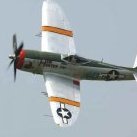
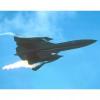
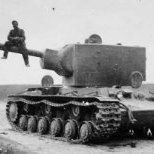


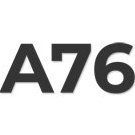

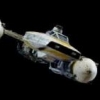

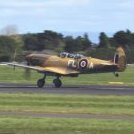

-01_compress20.thumb.jpg.876237f478e7de3cb420ca2f41976d87.jpg)
_5.56mm_Rifle_MOD_45162138.thumb.jpg.053e4f85b299efc3857bfa5c1911dc3c.jpg)
